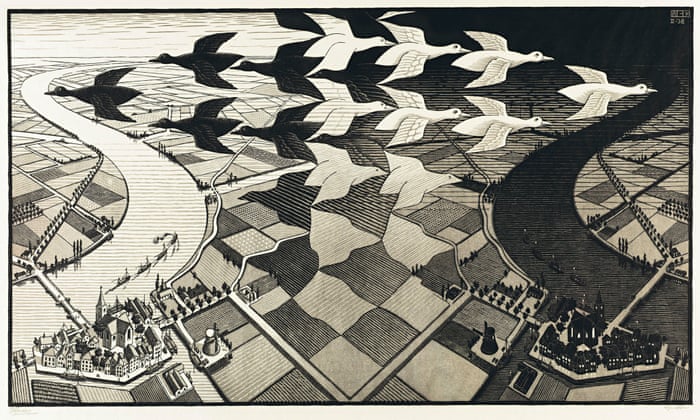The Hague, 18 Feb. – MC Escher’s trademark is undeniable: optical illusions, impossible architecture, vertiginous reflections and nature exploited by geometry. This is what the Dutch city of The Hague is using to celebrate the 125th anniversary of the graphic designer’s birth, with several exhibitions to discover his particular utopian figures this year.
Birds that turn into fish, water that flows upwards, an endless serpentine of stairs or two hands that draw themselves are examples of the work “for which he is known and admired around the world, from Australia to Japan or Brazil”, Judith Kadee, curator of “Escher – Another World”, tells EFE, an exhibition which is hosted by the Art Museum (Kunstmuseum) of The Hague in this Saturday until September.
“It’s a good year to celebrate his legacy. It’s the 125th anniversary of Escher’s birth and that’s a great reason to celebrate, not only in The Hague, but all over the Netherlands, because he’s a well-known artist. A lot of people know his images, and I think it’s part of our culture,” says Kadee, in front of a three-dimensional work that defies Escher’s art.
Maurits Cornelis Escher (1898-1972) was born in the Frisian town of Leeuwarden, 200 kilometers from The Hague, and spent his career obsessively seeking a transition from the flat surface of paper to spatiality, a design approach that plays with the viewer’s perception. .
In its exhibition, the Kunstmuseum combines the Dutch artist’s famous two-dimensional prints with seven spectacular three-dimensional installations by the Belgian artist duo Gijs Van Vaerenbergh, a spatial dialogue between geometries that causes as much optical confusion as the phenomenon depicted in the work. of Escher prints.
“We invited the Gijs Van Vaerenbergh couple to respond to Escher’s work and legacy. They do work that’s kind of thematically tied to Escher. They work on a kind of boundary between architecture and art, and it’s something very interesting. So they made very large installations for this exhibition,” he adds.
How do the two works interact? The theme of the show is a contrast between day and night, so dear to Escher. Gijs Van Vaerenbergh’s interventions consist of sculptural associations with, among others, lightness and heaviness, temporality and eternity, impossible architecture and infinity; themes that are also at the heart of Escher’s work.
The largest rooms are bathed in light and one walks through mirrors, nature, the first architectural works of Escher, but also eternities and impossible constructions.
“In the part that corresponds to the night, where everything is very dark, there are the little themes of Escher to which Gijs Van Vaerenbergh responds. They are like little lights in the dark,” says Kadee.
A second exhibition, “The Discoverer of Escher: Samuel Jessurun de Mesquita”, also opens this weekend at Escher in Het Paleis, a museum in central The Hague, and will run until October. Also a graphic designer, he was a professor at the School of Architecture and Decorative Arts, where he was impressed by the work of an architecture student named Maurits Cornelis Escher, whom he convinced to change careers.
Escher later became a master of graphic art and the two, teacher and student, formed a lifelong artistic and personal bond.
“His artistic preferences are partly the same, but De Mesquita has his own signature. In his depiction of men and animals, he leaves out all that is not essential and presents his subjects with a series of strong lines. In other representations, he is a little freer; these works arise from fantasy and are often humorous, but sometimes also threatening in nature,” says the Escher in Het Paleis
Even after Mesquita’s death in Auschwitz in 1944, Escher paid homage to his teacher and friend, and this museum in The Hague now celebrates both by hanging the works of student and teacher face to face.
The opening weekend is not only about the Kunstmuseum and Escher in Het Paleis: it is full of activities organized in collaboration with cultural partners, schools, neighborhoods and businessmen of the city. The Hague will be the city of Escher in 2023 and some buildings will even be decorated in the Escher style.

